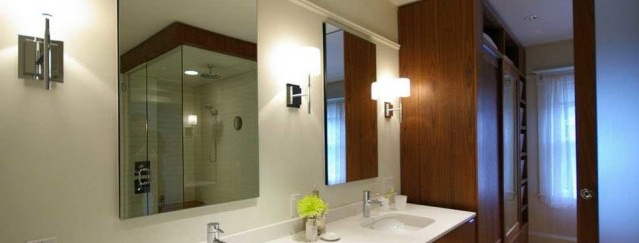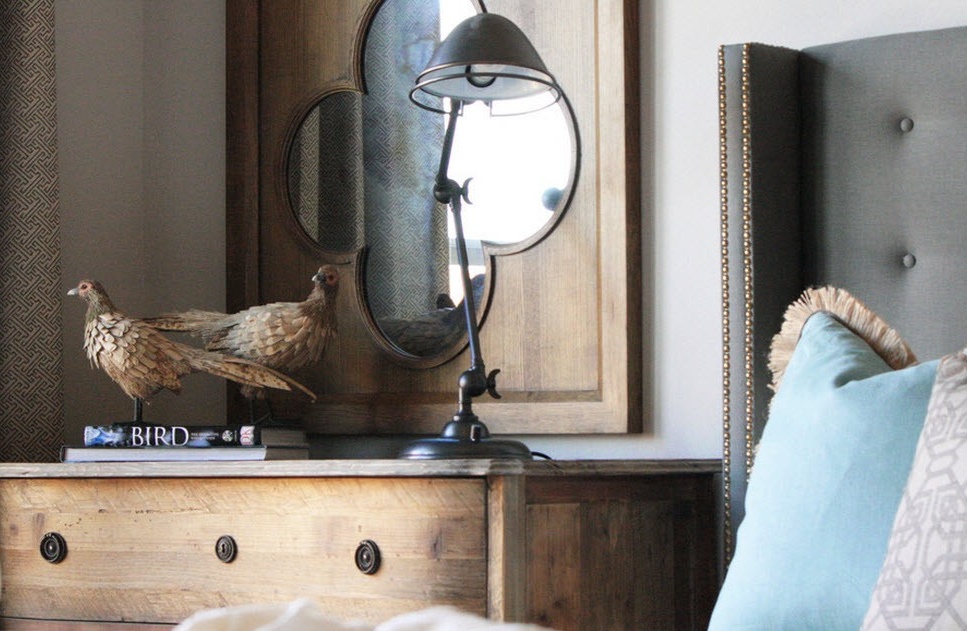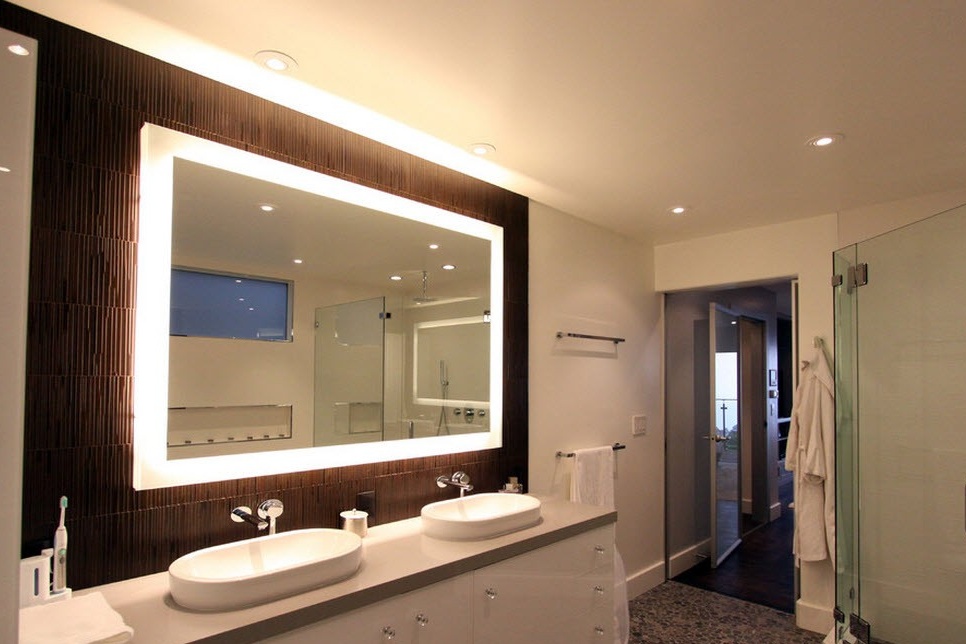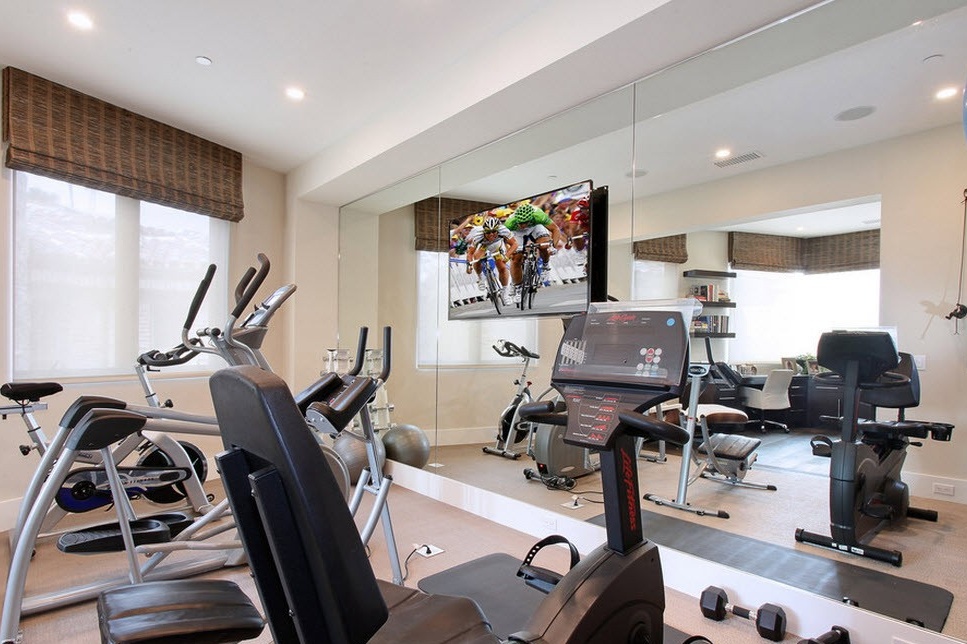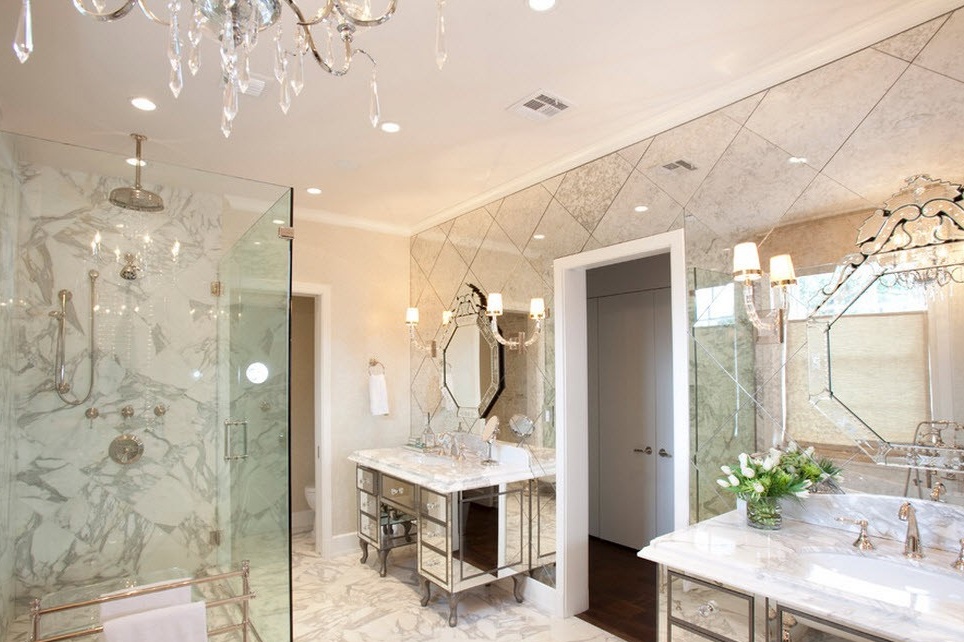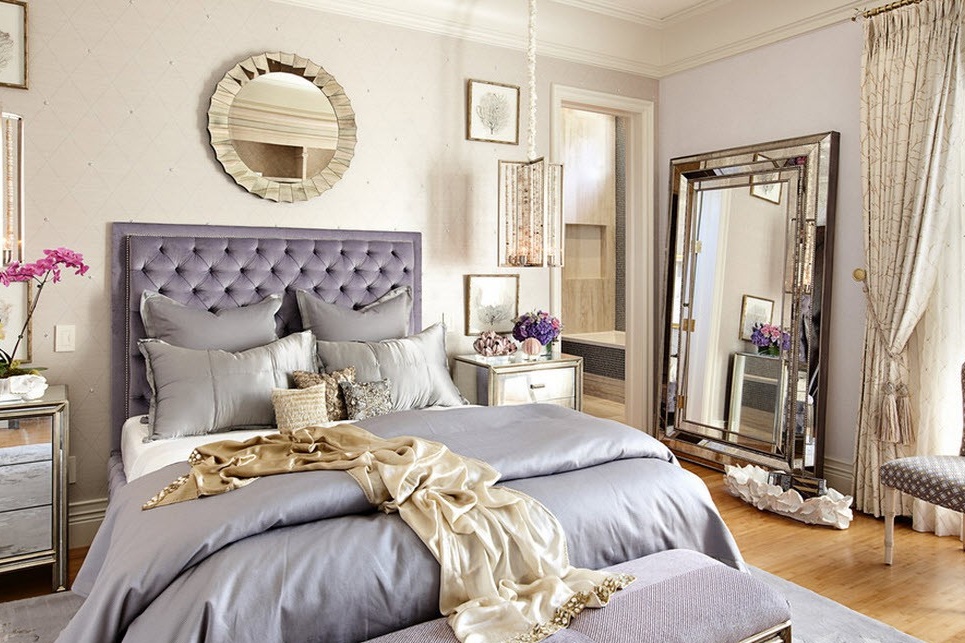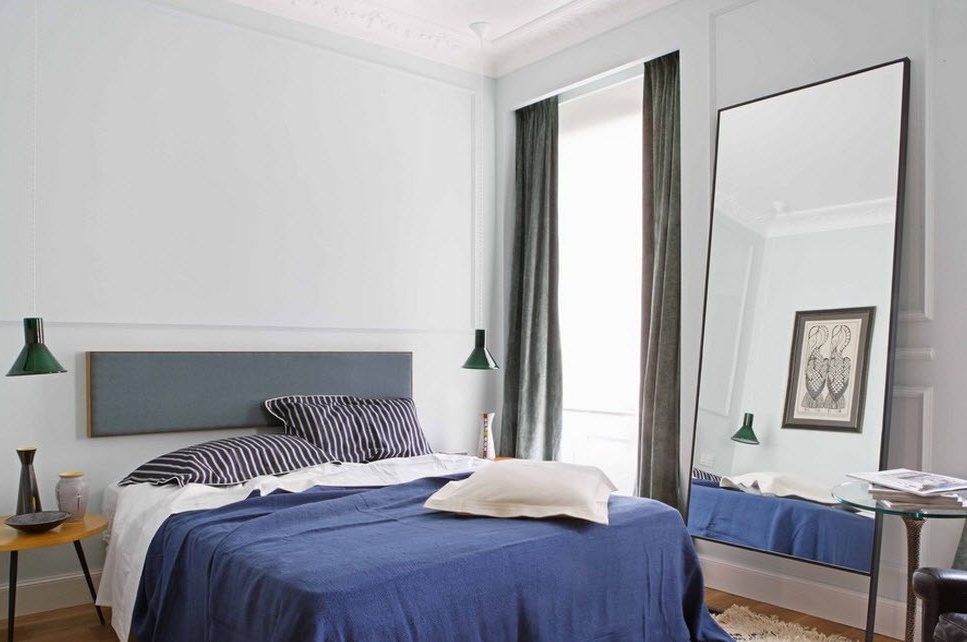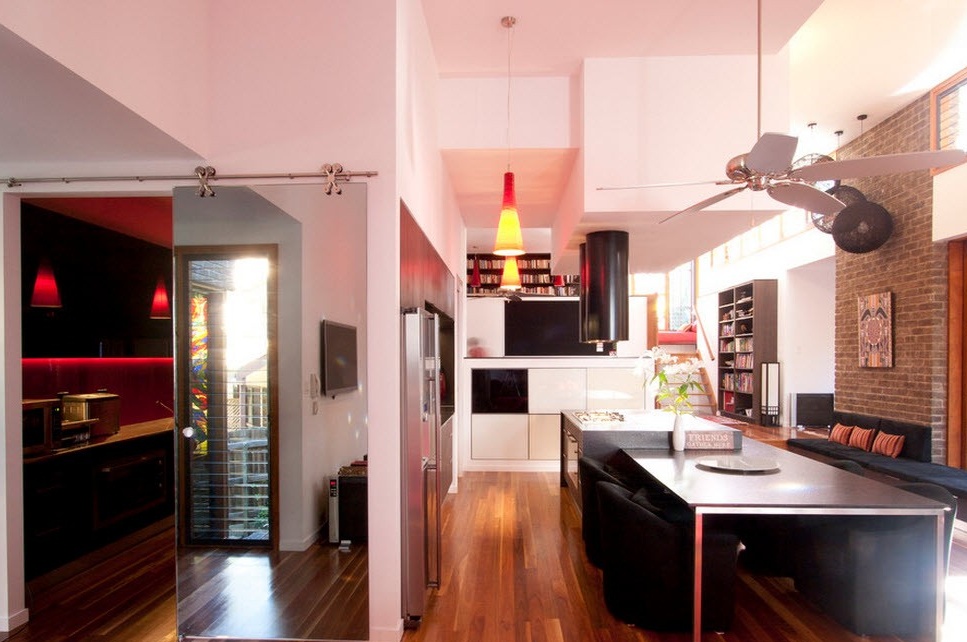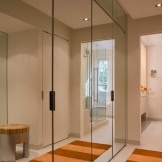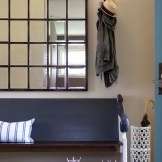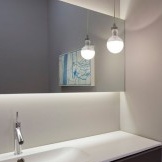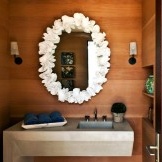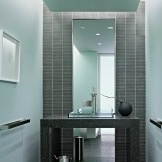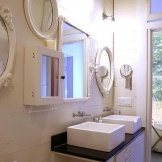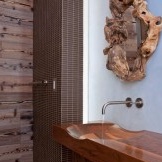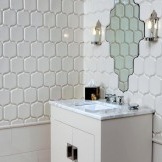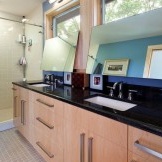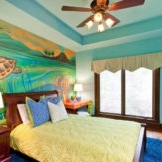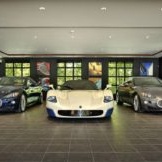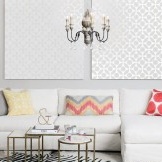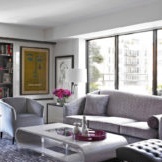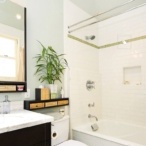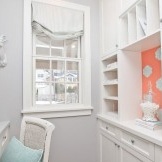Mirror as an interior decoration!
One of the most original ways to decorate the interior, as well as eliminate imperfections and geometric imbalances in the room, is to use mirrors and mirror surfaces.
Currently, mirrors are often used not for domestic utilitarian needs, but rather for interior decoration, its transformation, as well as an additional light source and the ability to visually expand the space. The ancient Egyptians thought of the first to use a mirror for lighting, who installed several mirrors in underground churches at a certain distance opposite each other. The sun's rays penetrating the temple were reflected from one mirror, and from it the light fell on other mirrors, thereby completely illuminating the room.
Today, the mirror industry offers a wide range of all kinds of mirrors that can change almost any interior beyond recognition. Mirrors differ in their style, as well as in the location (wall or floor).
Artificially Aged Mirror - one of the most popular design elements. The surface of the mirror is treated with a special acid that is absolutely safe for health. Thanks to this technique, the reflection in the mirror looks like an old photograph, and the mirror itself can be easily confused with antique.
Mirrors with interior lighting were originally intended for rooms with high humidity, such as a bathroom. Behind the mirrored surface there were lighting devices to which condensate did not get. The production of mirrors with an integrated TV is based on the same principle. Such an invention will be useful if the TV does not fit organically into the interior. One has only to turn off the power and only a mirror becomes visible. With bright decorative illumination, even large massive mirrors look more advantageous on the wall, seem weightless and seem to soar in the air.
Panoramic mirrors or mirrored surfaces create a feeling of large space and, most often, occupy an entire wall in the room. Small convex mirrors, called the fisheye, also belong to panoramic ones. Such spherical mirrors, capable of reflecting the entire room, were used in jewelry stores as tracking devices.
Facet mirrors able to independently scatter the sun's rays due to the many faces - facets. Such mirrors were popular back in Venice, and today they get a new life, illuminating modern interiors with numerous sun-bunnies. Among design innovations and inventions are very popular multi-part mirrors, which consist of separate modular mirrors, or interconnected, and imitate fragments, dew drops, cracks or the effect of a broken mirror. No less original are colored mirrors made of polymer acrylic or coated with amalgam, allowing you to see the world in your favorite color. In almost any modern interior you can find curly mirrors in the form of silhouettes of animals and people, floral ornaments, and even in the form of famous emblems and phrases.
An extraordinary element of decor can become false mirror, the surface of which may be convex or concave in several places. Initially, this effect was considered a manufacturing defect, but later became fashionable and gained popularity thanks to the “Laughter Room” attraction. Today, such mirrors will be an interesting detail of the interior in an ordinary apartment, bringing joy to both children and adults.
Among the floor mirrors, the most famous psyche mirror, which is a large mirror sheet fixed between two vertical posts, so that it can be easily tilted at the right angle. Most often, the mirror is two-sided and when turning, you can see an increased reflection.
Attached floor mirror any large mirror in a heavy frame can become. To ensure the safety of children and pets, the design of the mirror must be stable. This type of mirror is suitable for a dressing room or an adult bedroom of small sizes. The height of the mirror should be approximately 170 centimeters, then any member of the family will be able to find reflection in it.
Convenient and practical mirror on stand can be placed in any room, and if necessary rearranged. The angle of inclination of such a mirror cannot be changed. The design of the mirror can be equipped with drawers and shelves for storing small items.
Another fashionable novelty is screen mirror, which copes with the function of zoning and expanding the space in the bedroom and in the spacious living room. Especially relevant mirror screen will be in an apartment with a free layout. You can choose a model with fixed sections, or it is possible with rotating ones. In any case, the screen mirror will be not only an additional source of light, but also a stylish accessory in any interior.
An important role in creating a unique stylish design is played Mirror furniture. Facades with mirror canvases not only reflect light and visually expand the space, but also save space by solving the problem of placing a mirror. Such finishing elements as cornices, door trim, plinths can also be mirrored. Finishing the ceiling and doors with mirror panels is also a favorite technique for designers to visually increase the size of the room.
Basic principles for the location of mirrors in the interior
If improperly positioned, the mirror can make the room uncomfortable, cold and dark. Therefore, it is important to find the right and most profitable place for the mirror, both in terms of its basic and decorative functions.
A mirror opposite the window will fill the room with additional sunlight. The room will become brighter if you put a desk lamp or several light sources in front of the mirror.
Incorrect room proportions can also be corrected with a mirror. A large wall or floor mirror will make the visible boundaries of the room larger. If the room is too narrow, then a horizontally elongated mirror will help to expand it visually. You can “raise” the ceiling if you place mirror cornices around the room’s perimeter or hang a long vertical mirror on the wall. In a small room, you can decorate using two mirrors two adjacent walls. This will allow to expand the space and use such a decorative element for practical purposes.
There are also a few rules for Feng Shui fans. For example, it is considered correct to hang a mirror opposite a beautifully laid dining table, but a workplace or a mess in a mirror should not be reflected.
When choosing a mirror location, do not forget about the functional features of the room. So, for example, for the bathroom there are special safe mirrors, and for a children's mirror with a special film - protection against fragments.
History of the origin of the mirror
The first small mirrors made of tin, platinum and gold, discovered by archaeologists, date back to the Stone Age. The age of Turkish mirrors from obsidian polished to a shine is about 7,500 years. In ancient Rome, mirrors made of bronze or steel were a great privilege, since maintenance of a metal that was constantly oxidized required a lot of effort and expense.
The history of modern mirrors dates back to Europe, where in 1240 glass vessels were blown out. Later, in 1279, John Pekam, using the technology of applying a thin layer of lead on glass, made the first real mirror. Two hundred years later, Venice became a monopolist in the production of mirrors. The high quality of the Venetian mirrors was achieved through the use of precious metals in reflective compositions. This also explained their incomparable high cost. The price boom was stopped by the French, who, having learned the production technology, began to produce no less high-quality mirrors for the palace of Louis XIV. And in 1835 in Germany, a new technology was developed using silver, which allows for a clearer mirror image.
In Russia, mirrors were widespread during the time of Catherine II and were very popular with the palace nobility, which adorned their estates and palaces.

